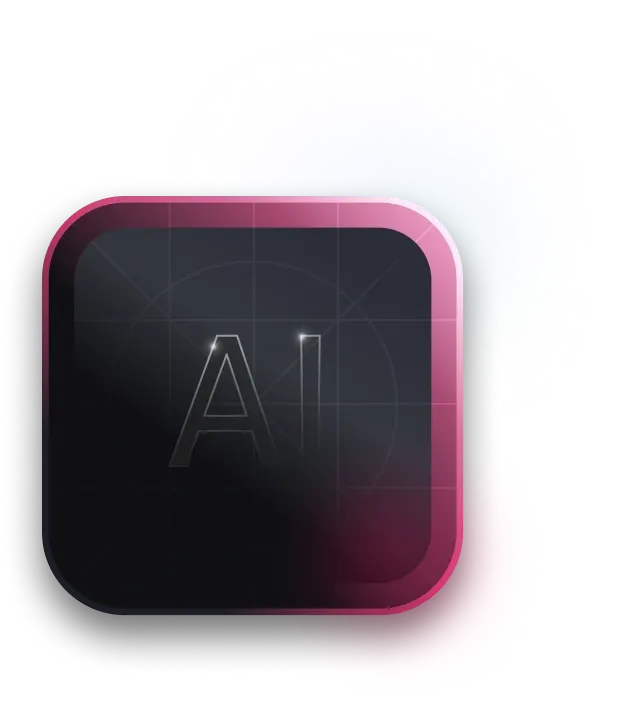Artificial Intelligence has reached to unprecedented heights in the tech-centric world, notably within entertainment. By merging AI with gaming and media, creators can present users with robust experiences tailored specifically for them. Wondering how to harness the power of this technology? We are here with your ultimate guide on developing an AI-powered entertainment app. Keep reading, and we'll take you through everything, from conceptualizing your idea to setting it live.
Defining the Purpose and Target Audience
Before you step toward the app development process, you must know why and for whom you're building it. Ask yourself: What is your purpose? It might offer a unique gaming experience or provide a platform for streaming movies or music. A well-defined purpose acts as a lighthouse, guiding all future decisions.
But knowing why you're building the app is not enough. You must also know who will be using your product. Who are these people? What do they like, and how old are they? See if there's a common thread in their interests or lifestyle traits. Whether they're passionate gamers, movie enthusiasts, music lovers, or bookworms will impact the features and design of your app. Your audience could span different age groups with distinct preferences, so it's crucial to understand them well.
After defining the purpose and audience, market research is the next big step. Look for similar applications in the market and analyze their strengths and weaknesses. This will give you deep insights into what your app should have, what it can stay without, and where it could stand out. Also, bear an ear to potential users – a short survey or an open discussion can often bring up unconsidered needs.
Here data analysis comes into play. The information from your market research is a gold mine, offering insights into your users' needs. Analyzing this data will aid in developing an application that aligns with user expectations, satisfying their entertainment cravings effectively.
The pre-development phase is about understanding your users, charting the path, and setting a clear vision. We understand this could seem like a mission – but it's essential. Skipping these steps may lead to building a great app, not the one users want or need.
Conceptualizing the AI-Powered Entertainment App
Let's move to the next phase: imagining and mapping out your AI entertainment app.
Here's a list of essential tasks in this stage:
- Brainstorm features. With your target audience and purpose in mind, consider the app's main features. For instance, will it include AI-powered game recommendations, personalized playlists, or brilliant content discovery? Let your creative juices flow;
- Map the user journey. It's time to imagine how your users will navigate the application. This involves defining all their steps, from opening it to achieving their goals;
- Draw wireframes. Wireframes are simple sketches that give a basic visual structure. They illustrate the placement of features and the flow from one screen to another;
- Create a prototype. A prototype is the basic, working version. It gives you an early look at how the app will function and lets you test the overall design and flow
Conceptualizing your application is where your creative ideas meet technical reality. It's a chance to consider all potential scenarios and ensure your AI app is designed with both beauty and function in mind. It should include cool features, make sense to your users, and help them fulfill their needs.
Learn the steps to build a successful music streaming app
Data Collection and Preparation
As you step into data collection and preparation, remember that this phase fuels your app's AI. It's like gathering ingredients for a recipe.
Here's how to go about it:
- Identify data sources. You need data to train your AI model. This could be user data from surveys, online behavior, or existing databases. Identify where you'll get this from;
- Gather data. After pinpointing sources, start gathering data. The more you have, the smarter your AI can be;
- Clean data. Raw data can be messy. It's essential to clean it, removing errors or irrelevant parts;
- Augment data. Enrich your data and add more details. It helps improve the AI's learning
Training your AI model needs good, clean data. The work put in at this stage makes your AI model strong and reliable. Like a chef selecting and preparing ingredients for a meal, your careful work with data shapes the success of your app.
Building the AI Model
Using AI in entertainment, think of it as the brain of your app. You're not merely adding lines of code but instilling it with the ability to learn, understand, and make decisions. The tools you pick for this task, such as machine learning algorithms or neural networks, depend on the app's purpose and the type of data it will process.
Training your model is next on the agenda. Feed it with your collected and cleaned data, enabling it to learn and adapt. The model will start recognizing patterns, effectively learning to 'think.' Once it's trained, it's time to fine-tune it. Adjustments are made to ensure it performs optimally. When your AI model is ready, it should make precise predictions and intelligent recommendations, adding value to users.
Our AI and Data Science Case Studies

Developing the App Architecture
Choosing an effective technology stack is crucial. These are the programming languages and software products you'll use to build your app. The right combination can mean the difference between an app that's merely okay and one that's spectacular.
Like the engine under the app's hood, the backend is an essential part of the architecture. This is where you integrate AI, set up databases, and ensure smooth data flow. It needs to be robust and capable of supporting the complex functionalities of your AI model.
Frontend development is about crafting the look and feel. It concerns both aesthetics and user-friendliness. An enticing, well-constructed frontend can attract users, while an ineffectively designed one might discourage them from returning. Thus, designing an easy-to-navigate, visually appealing, and adaptive interface becomes essential.
In a nutshell, developing the architecture involves making strategic decisions that will significantly influence the app's performance and user experience. It's the cornerstone upon which the whole app stands, making it a crucial phase in the development process.
Implementing AI Features in the App
Implementing AI in media and entertainment is where your vision truly comes to life. With the integration of the AI model into the backend, your app begins to think, analyze, and learn. Packed with machine learning capabilities, this powerful brain gives it a unique edge.
After the model has been fully integrated, you can commence introducing AI-powered functionalities that your users will adore. Whether these are customized suggestions, smart search features, or even speech recognition functions hinges on what you've pinpointed as most advantageous for your audience.
However, it's crucial to remember that simply incorporating features isn't enough. Each new functionality must undergo rigorous testing to confirm its performance meets expectations. This process of examining and refining is paramount as it helps detect any glitches or problems demanding immediate attention, thereby guaranteeing each feature enhances user interaction value. At the end of this phase, the application isn't just a program anymore. It's a dynamic platform with intelligent features ready to engage and excite users.
Let’s create software solutions that drive results
Enhancing User Experience and Engagement
Boosting user experience and engagement is a decisive factor for success. This phase is about refining and polishing every corner of the application to create a delightful journey.
Here's a list of ways to achieve this:
- Intuitive user interface (UI). A user-friendly interface is essential. It should be appealing, easy to navigate, and provide the user with all necessary information;
- Performance optimization. The performance is critical. Any interruptions can lead to user dissatisfaction and decrease the likelihood of return usage;
- Personalization. Use your AI model to deliver personalized content. It can be as simple as remembering user preferences or as complex as suggesting behavior-based content;
- Feedback mechanisms. Provide users with the option to evaluate and provide feedback on your content. This can assist you in grasping their preferences or aversions, allowing you to enhance your application based on this critique
Enhancing the user experience is not a one-time task but a continuous process. Regularly monitor interactions and feedback, adapting your approach as needed. A well-executed strategy will keep users hooked and help attract new ones, making your app stand out in a crowded market.
Launching, Monitoring, and Iterating
With the AI-powered application developed and polished, it's time to present it to the world. Launching is a crucial step requiring a strategic approach. Proper marketing is essential to reach your target audience. Consider announcing the launch via social media, blog posts, or press releases. Remember to emphasize the unique AI features and how they benefit users. Once your application is operational, the task does not end there.
Supervising its effectiveness turns into a critical assignment. Utilizing analytics tools allows you to gauge download counts, interaction levels, duration of sessions, and further statistics. These parameters provide precious understanding about how consumers engage with your app and which features they find most useful or appealing.
In addition to monitoring numerical measurements, it is crucial not to overlook the value of subjective feedback. Customer evaluations and scores can offer countless insights; they pinpoint aspects users admire and those which may need some refinement.
Iterating your app based on the feedback and data you gather is fundamental. It should evolve with your users, always aiming to meet their changing needs and expectations. This cycle of launching, monitoring, and iterating is the key to maintaining a successful, user-centric app.
Conclusion
Artificial Intelligence in entertainment is a powerful tool that opens up a world of opportunities. Building an app is an engaging and rewarding journey. You start with defining your purpose and audience and conclude with a product that's not just an application but a dynamic experience. It's a tool that learns from its users and evolves. And while challenges might appear along the way, the result is absolutely worth the effort.
Ready to take the plunge into developing your AI-powered entertainment app? Don't go it alone. Contact our team of expert AI developers who are well-equipped with this industry's latest technology and knowledge!

Our team is dedicated to delivering high-quality services and achieving results that exceed clients' expectations. Let’s discuss how we can help your business succeed.


SHARE: